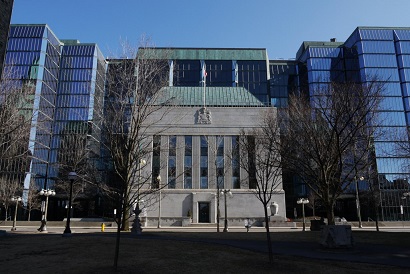
The explosion in Canada’s home prices have led many observers to draw parallels between the Canadian housing market and the US housing market in 2007, right before the subprime mortgage crisis.
However Canada’s housing market is in a much stronger position to navigate the headwinds, according to Marty Young and Michael Cahill of Goldman Sachs’ Economics Research team. “One important difference [between the two markets] is with respect to the mortgage lending standards prevailing in the two times and places,” they said.
In 2007, lending standards in the United States loosened as home prices approached their peak. Lending standards in Canada, meanwhile, have been tightening since the global financial crisis.
Canadian banking regulators have been “reducing maximum LTV [loan-to-value] ratios and amortization terms, and, more recently, Vancouver and Toronto have introduced foreign buyer taxes to dampen house price growth,” Young and Cahill said. These developments have led to a default rate that is well below that of the United States.
To help slow down the red-hot housing market, the Bank of Canada raised its benchmark interest rate by 25 basis points to 0.75% at its July meeting. By doing so, it became the first major central bank, apart from the US Federal Reserve, to raise rates after the financial crisis.
The latest rate hike could cause some problems for Canadian homeowners. While these borrowers aren’t as sensitive to rate rises as their American counterparts, Canadian mortgages are structured with 25-year amortization schedules at five-year terms. Therefore borrowers will need to get a new mortgage every five years and are susceptible to interest rate increases.
“The lower baseline mortgage default rates in Canada, combined with stronger bank capitalization, suggest that a house price decline in Canada of the magnitude experienced in the US during 2007-2011 would likely pose smaller systemic risks than were realized in the US during the financial crisis period,” Young and Cahill said.



